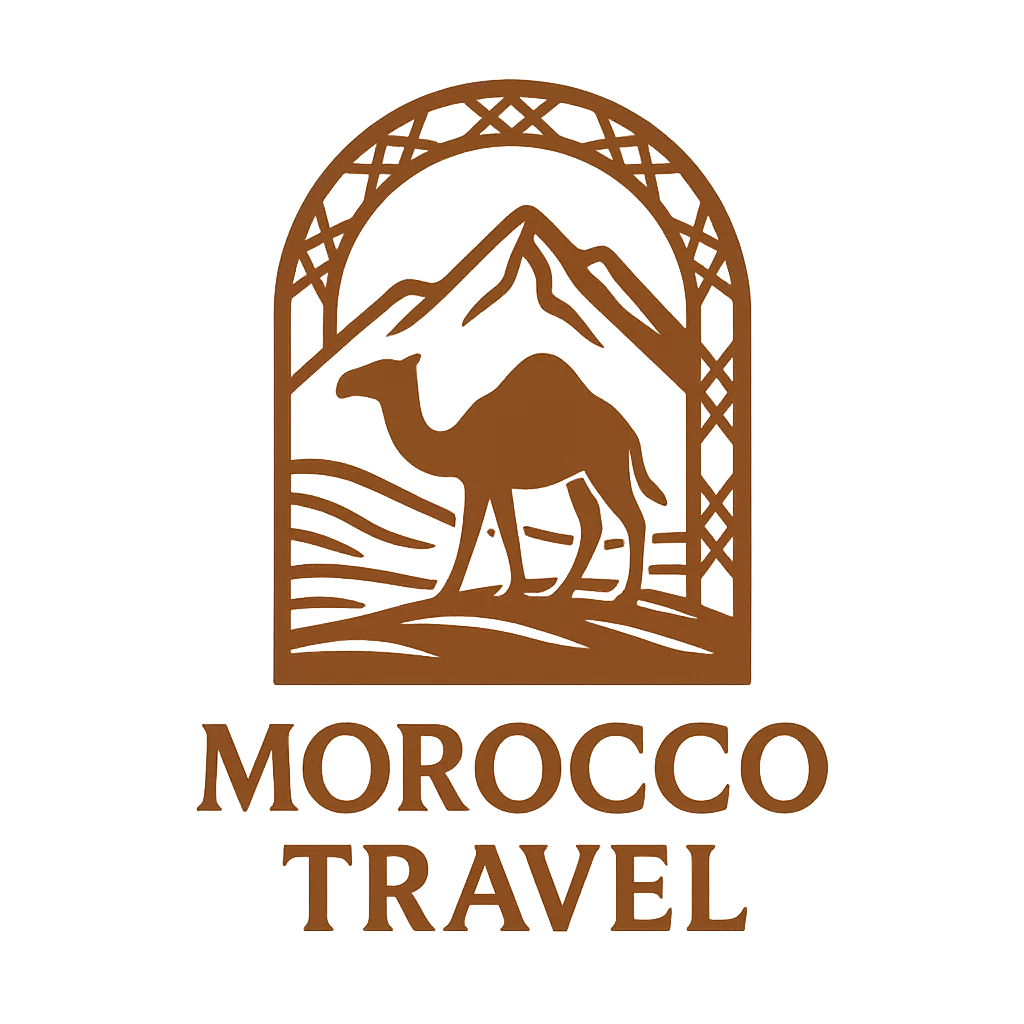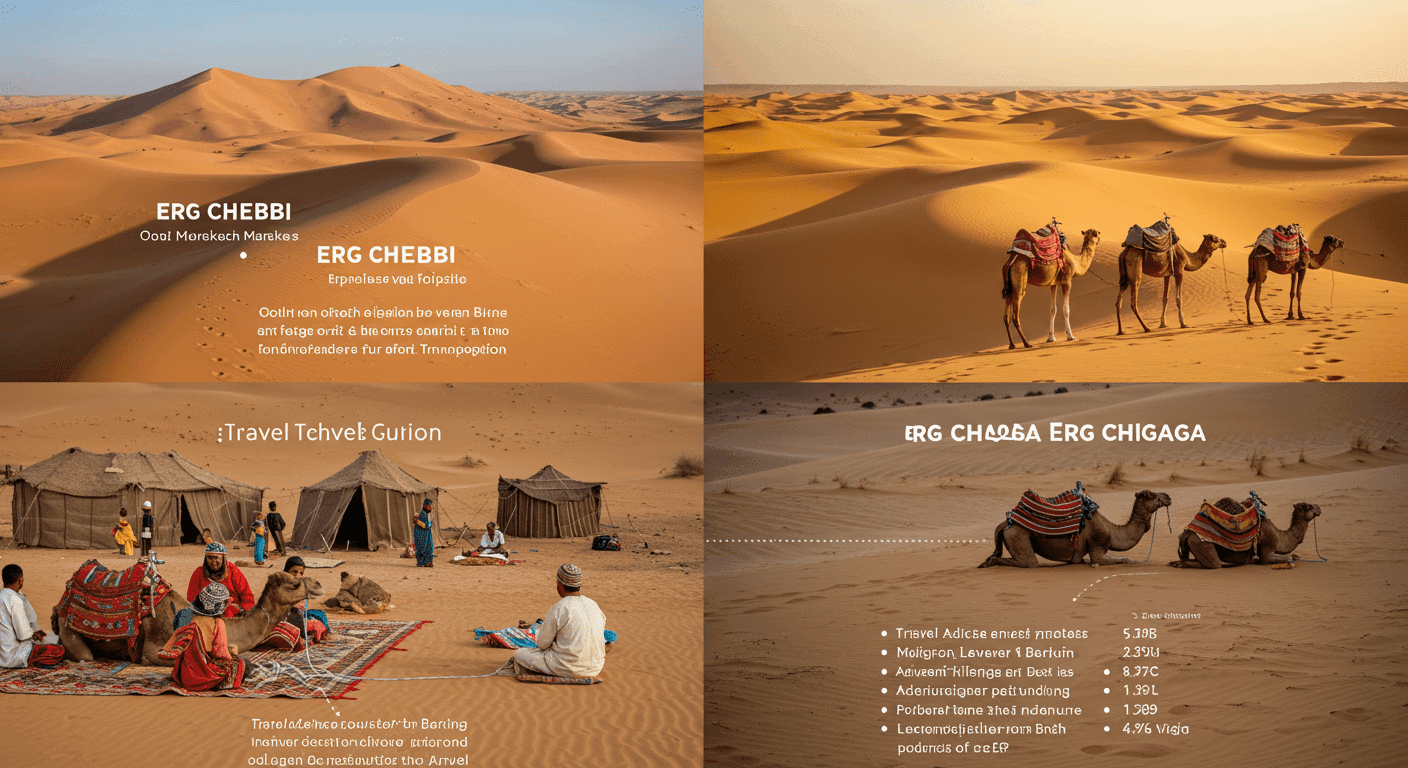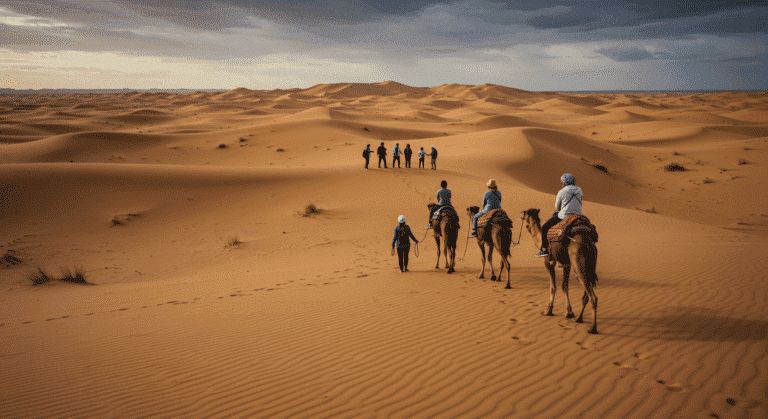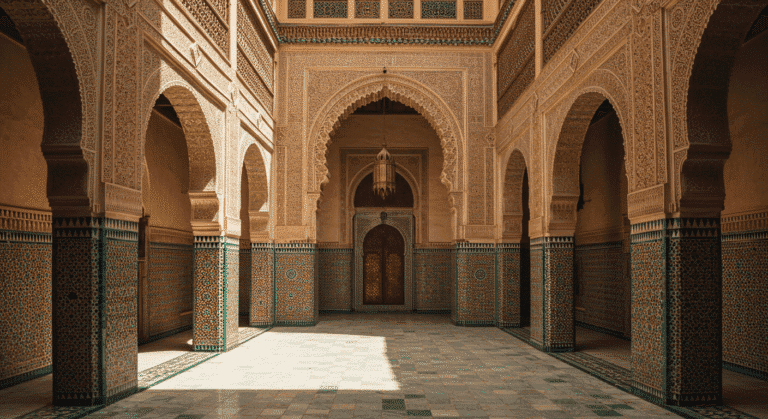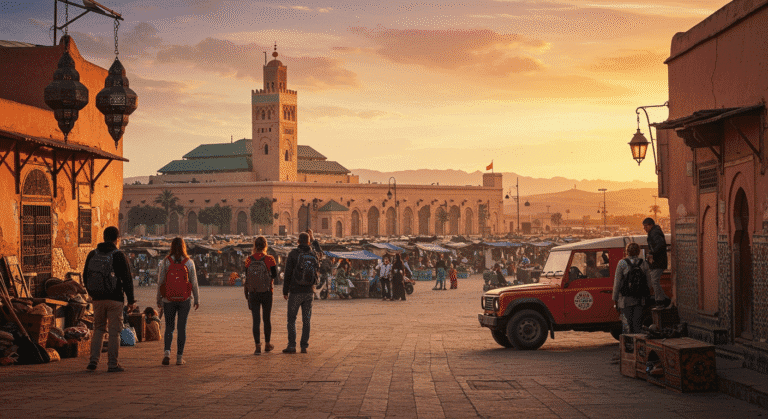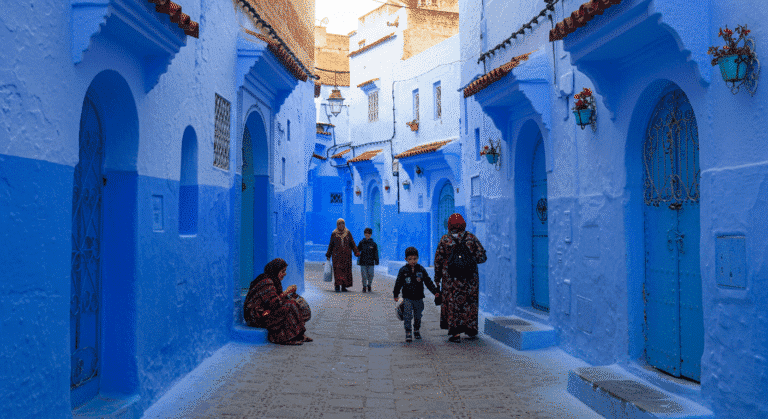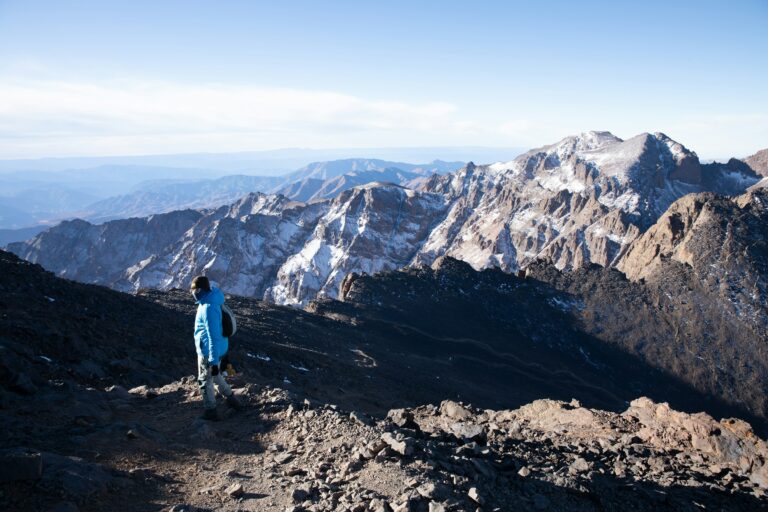Sahara Adventure: Erg Chebbi vs. Erg Chigaga
Introduction
Did you know that 73% of travelers to Morocco skip the Sahara Desert entirely, missing what many consider the country’s most transformative experience? This staggering statistic reveals a crucial gap in travel planning, as choosing between Erg Chebbi and Erg Chigaga for your Sahara adventure can make or break your Moroccan journey. Both destinations offer distinct desert experiences, yet understanding their unique characteristics is essential for crafting your perfect adventure in sahara.
Recent travel data indicates that while Erg Chebbi receives 60% more visitors annually, Erg Chigaga provides a 40% more authentic, untouched desert experience. This comprehensive guide will navigate you through the complexities of planning your morocco sahara adventures, ensuring you select the desert experience that aligns perfectly with your travel style, budget, and expectations.
Whether you’re drawn to the accessibility and infrastructure of Erg Chebbi or the remote wilderness of Erg Chigaga, your Sahara adventure tours decision will shape memories that last a lifetime. Let’s dive deep into what makes each destination extraordinary.
Travel Checklist: What to Pack for Your Desert Adventure
Essential Desert Gear
Your desert packing strategy requires careful consideration of extreme temperature variations and sandy conditions. Pack lightweight, long-sleeved clothing in light colors to protect against intense UV rays while maintaining breathability during 40°C+ days.
Must-Have Items:
- Wide-brimmed hat with chin strap (prevents loss during camel rides)
- High-SPF sunscreen (minimum SPF 50) and lip balm with UV protection
- Lightweight scarf or shemagh for sand protection
- Comfortable closed-toe shoes and sandals
- Moisture-wicking base layers and warm jacket for nighttime temperatures dropping to 5°C
Photography and Technology Essentials
- Extra camera batteries (cold nights drain power 50% faster)
- Portable charger with solar panel capability
- Dust-proof camera bag or protective covers
- Headlamp with red light option for stargazing
Comfort and Health Items
- Personal water bottle with filtration system
- High-quality sleeping bag rated for desert conditions
- Personal toiletries in sealed containers
- Basic first aid kit including anti-diarrheal medication
- Wet wipes for quick cleaning in water-scarce environments
Pro Tip: Pack items in dust-proof compression bags to maximize space and protect belongings from fine sand particles that penetrate everything.
Best Time to Visit: Seasonal Guide to Sahara Adventures
Peak Season: November to March
This period offers the most comfortable temperatures, with daytime highs averaging 22-25°C and nighttime lows around 8-12°C. Tourist numbers increase by 85% during these months, particularly around Christmas and New Year holidays.
November-December Advantages:
- Moderate temperatures perfect for extended outdoor activities
- Clear skies ideal for photography and stargazing
- Post-harvest season brings fresh local produce
- 25% lower accommodation costs compared to European winter destinations
Shoulder Season: April-May and September-October
Experience the desert with 40% fewer crowds while enjoying pleasant weather conditions. April mornings can be crisp at 15°C, warming to comfortable 28°C afternoons.
Summer Months: June-August
While challenging with temperatures reaching 45°C, summer offers unique advantages for budget-conscious travelers. Accommodation costs drop by 30-50%, and you’ll experience authentic desert solitude. However, outdoor activities are limited to early morning and evening hours.
Data Insight: July sees the lowest tourism numbers (only 15% of annual visitors), making it ideal for travelers seeking complete isolation and authentic cultural immersion.
Step-by-Step Itinerary: Your Perfect Sahara Adventure
Day 1: Marrakech to Desert Gateway
Erg Chebbi Route (via Merzouga): Depart Marrakech at 7:30 AM for the scenic 560km journey through the Atlas Mountains. Your adventure in sahara begins with breathtaking views of traditional Berber villages and dramatic landscape changes. Stop in Ouarzazate, Morocco’s “Hollywood,” where over 200 international films were shot.
Timing: 9-10 hours with strategic photo stops Lunch: Traditional tagine in Ouarzazate (budget: 60-80 MAD) Afternoon: Arrive in Merzouga, meet your camel caravan guide
Erg Chigaga Route (via M’hamid): Take the southern route through Taroudant and Foum Zguid, experiencing less-traveled roads and more authentic village interactions. This 8-hour journey offers glimpses of traditional desert life unchanged for centuries.
Evening Activity: Sunset camel trek (1.5 hours) culminating in your first night under stars that shine 40% brighter due to zero light pollution.
Day 2: Full Desert Immersion
Morning: Wake to sunrise painting dunes in gold and amber hues. Participate in traditional bread-making with Berber guides while enjoying mint tea prepared over open fires.
Daytime Activities:
- Sandboarding on dunes reaching 150+ meters (Erg Chebbi) or 300+ meters (Erg Chigaga)
- Visit nomadic families maintaining traditional lifestyles
- Learn desert navigation techniques using stars and natural landmarks
- Photography workshop focusing on desert landscapes and cultural portraits
Evening: Traditional Berber music around campfires, storytelling sessions, and arguably the world’s best stargazing experience with visibility of 2,500+ stars.
Day 3: Cultural Immersion and Return
Erg Chebbi Advantage: Visit Khamlia village, home to Gnawa musicians descended from sub-Saharan African slaves. Experience authentic music performances and learn about this unique cultural heritage.
Erg Chigaga Advantage: Explore ancient trade route remnants and prehistoric rock art sites dating back 6,000 years. Interact with semi-nomadic communities maintaining ancestral traditions.
Return Journey: Alternative route via Dades Valley or Draa Valley, showcasing Morocco’s diverse landscapes and providing opportunities for carpet and pottery shopping in traditional cooperatives.
Budget Breakdown: Planning Your Sahara Investment
Erg Chebbi Cost Analysis
Budget Option (Per Person):
- 3-day tour from Marrakech: 1,200-1,500 MAD
- Standard desert camp accommodation
- Shared transportation in 4×4 or minibus
- Basic meals and activities included
- Total for 3 days: 1,500-2,000 MAD ($150-200 USD)
Mid-Range Experience:
- Private 4×4 transportation: +600 MAD
- Upgraded camp with private bathroom facilities
- Professional photography guide
- Additional activities (quad biking, extended camel treks)
- Total for 3 days: 2,500-3,200 MAD ($250-320 USD)
- Premium camps with air conditioning and full amenities
- Private chef and personalized service
- Helicopter transfers available
- Spa treatments and premium beverages
- Total for 3 days: 5,000-8,000 MAD ($500-800 USD)
Erg Chigaga Pricing Structure
Generally 15-20% more expensive due to longer distances and more remote location, but offers authentic experiences unavailable elsewhere.
Money-Saving Insider Tips:
- Book directly with local operators (save 20-30% compared to international agencies)
- Travel during shoulder season for 25% accommodation discounts
- Join group tours to reduce per-person transportation costs
- Negotiate package deals including multiple activities
Sustainable and Cultural Alternatives
Eco-Friendly Desert Experiences
Support sustainable tourism by choosing operators committed to environmental protection and fair wages for local communities. Look for companies that:
- Use solar power in desert camps (reducing generator noise and emissions)
- Implement waste management programs
- Source food locally from Berber cooperatives
- Provide fair employment to indigenous guides
Family-Friendly Adaptations
Erg Chebbi offers better infrastructure for families with young children, including:
- Shorter camel rides suitable for children 5+
- Medical facilities within 30 minutes
- More comfortable accommodation options
- Organized children’s activities including treasure hunts and cultural workshops
Solo Traveler Experiences
Both destinations excel for solo adventurers, with 68% of desert visitors traveling independently. Join existing groups or book private experiences based on your comfort level and budget.
Digital Nomad Considerations
Erg Chebbi provides better connectivity with 4G coverage in Merzouga town, while Erg Chigaga offers complete digital detox opportunities. Choose based on your work requirements and desire for disconnection.
Food and Dining: Culinary Adventures in the Desert
Traditional Desert Cuisine
Experience authentic Berber cooking techniques unchanged for generations. Must-try dishes include:
Tagine Preparation: Watch your dinner cook slowly in traditional clay pots buried in desert sand, infusing flavors impossible to replicate elsewhere. The lamb tagine with dates and almonds, paired with fresh-baked bread, creates an unforgettable sensory experience as aromas mix with desert air at sunset.
Berber Pizza (Medfouna): Stuffed flatbread cooked on hot stones, filled with spiced meat, onions, and herbs. This portable meal reflects nomadic lifestyle adaptations.
Desert Tea Ceremony: Mint tea preparation becomes an art form, poured from increasing heights to create perfect foam. The ritual represents hospitality and provides hydration in arid conditions.
Local Markets and Ingredients
Visit weekly souks in gateway towns where desert dwellers trade dates, argan oil, and spices. Purchase saffron directly from producers at 60% below European prices, ensuring authenticity and supporting local economics.
Breakfast Specialties: Start days with fresh dates, locally-produced honey, and msemen (flaky pancakes) while watching sunrise paint dunes in spectacular colors.
Common Mistakes to Avoid
Booking and Planning Errors
Mistake #1: Choosing tours based solely on price without researching operator reputation. This leads to overcrowded groups, poor-quality food, and inexperienced guides affecting safety and enjoyment.
Solution: Read recent reviews, verify insurance coverage, and confirm group sizes before booking.
Mistake #2: Underestimating travel time and physical demands. Desert activities require moderate fitness levels, and long driving days can be exhausting.
Prevention: Build rest days into itineraries and honestly assess physical capabilities.
Cultural Etiquette Oversights
Dress Code Respect: Cover shoulders and knees in villages, even in extreme heat. Carry lightweight long-sleeved shirts for cultural site visits.
Photography Permissions: Always ask before photographing local people, especially women and children. Offer to share photos via WhatsApp or email.
Haggling Guidelines: Expected in markets but inappropriate for guide tips or emergency services. Learn cultural norms to avoid offensive behavior.
Packing and Preparation Mistakes
Overpacking Water: Reputable operators provide adequate hydration. Focus luggage space on protection and comfort items.
Ignoring Weather Extremes: Temperature variations of 35°C between day and night are common. Pack accordingly.
Safety and Travel Tips
Health and Medical Considerations
Desert environments present unique health challenges requiring preparation:
Altitude Adjustment: Atlas Mountain passes reach 2,260 meters, potentially causing mild altitude sickness. Stay hydrated and inform guides of any symptoms.
Sun Protection: UV intensity increases 10-15% due to sand reflection. Reapply sunscreen every 2 hours, even in shade.
Hydration Management: Consume 3-4 liters of water daily, increasing intake before feeling thirsty. Monitor urine color as hydration indicator.
Navigation and Communication
Offline Maps: Download detailed Morocco maps before departure. Cell service is intermittent in remote desert areas.
Emergency Contacts: Save local emergency numbers and operator contact information in multiple devices.
Travel Insurance: Verify coverage includes desert activities and medical evacuation. Some policies exclude “extreme sports” including camel riding.
Local Laws and Customs
Alcohol Restrictions: Not available in most desert camps. Purchase in Marrakech if desired for personal consumption.
Ramadan Considerations: During this holy month, eating and drinking publicly during daylight hours is disrespectful. Plan accordingly.
Currency Exchange: Bring sufficient Moroccan Dirhams. ATMs are unavailable in remote desert locations.
Conclusion
Your Sahara adventure choice between Erg Chebbi and Erg Chigaga ultimately depends on balancing accessibility with authenticity, comfort with challenge. Erg Chebbi offers infrastructure and convenience perfect for first-time desert visitors, while Erg Chigaga provides unparalleled isolation and traditional experiences for those seeking deeper cultural immersion. Both destinations deliver life-changing perspectives on Morocco’s diverse landscapes and rich Berber heritage.
Ready to transform your Morocco sahara adventures from dream to reality? Share your desert preferences in the comments below, subscribe to our newsletter for exclusive packing checklists, and follow us for more authentic travel insights that help you discover the world’s hidden gems.
FAQs
Do I need a visa for Morocco?
Citizens of 65 countries, including US, Canada, EU, and Australia, can enter Morocco visa-free for up to 90 days. Check current requirements before departure as policies change.
What’s the appropriate dress code for desert camps?
Modest, loose-fitting clothing works best. Long pants and sleeves protect from sun and sand while respecting local customs. Bring warm layers for cold desert nights.
Can I visit both Erg Chebbi and Erg Chigaga in one trip?
Yes, but requires minimum 5-6 days from Marrakech. The 280km distance between dunes makes this challenging but rewarding for dedicated desert enthusiasts.
Are desert camps safe for solo female travelers?
Reputable operators maintain excellent safety records with female guides available upon request. Choose established companies with positive reviews from solo female travelers.
What wildlife might I encounter in the Sahara?
Desert foxes, lizards, and various bird species are common. Scorpions and snakes exist but encounters are rare when following guide instructions and staying in designated areas.
Can children participate in camel treks?
Most operators accept children 5+ for short camel rides with adult supervision. Consider child’s comfort with animals and heat tolerance before booking.
What happens if weather conditions are poor?
Sandstorms occasionally occur but experienced guides monitor conditions closely. Tours may be modified or postponed for safety, with alternative activities offered.
Ready for your desert adventure? Download our complete Sahara packing checklist and join thousands of travelers who’ve discovered Morocco’s magical desert landscapes through our exclusive travel guides.
